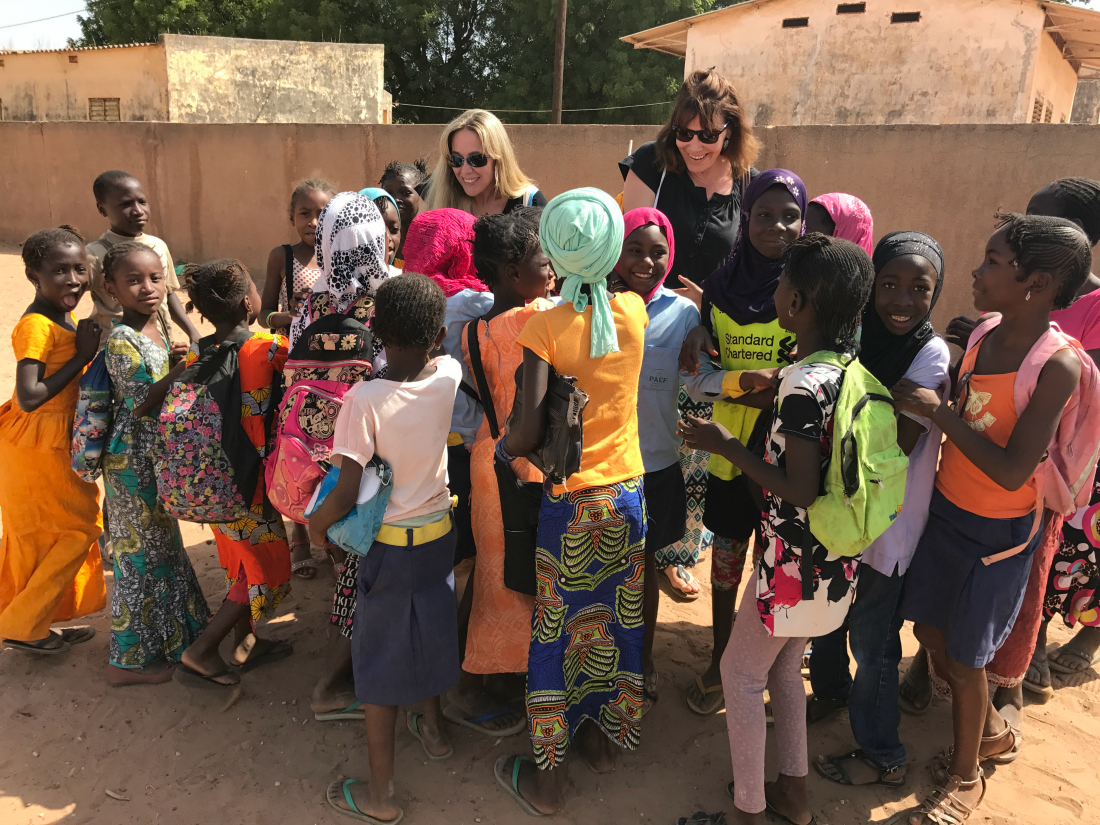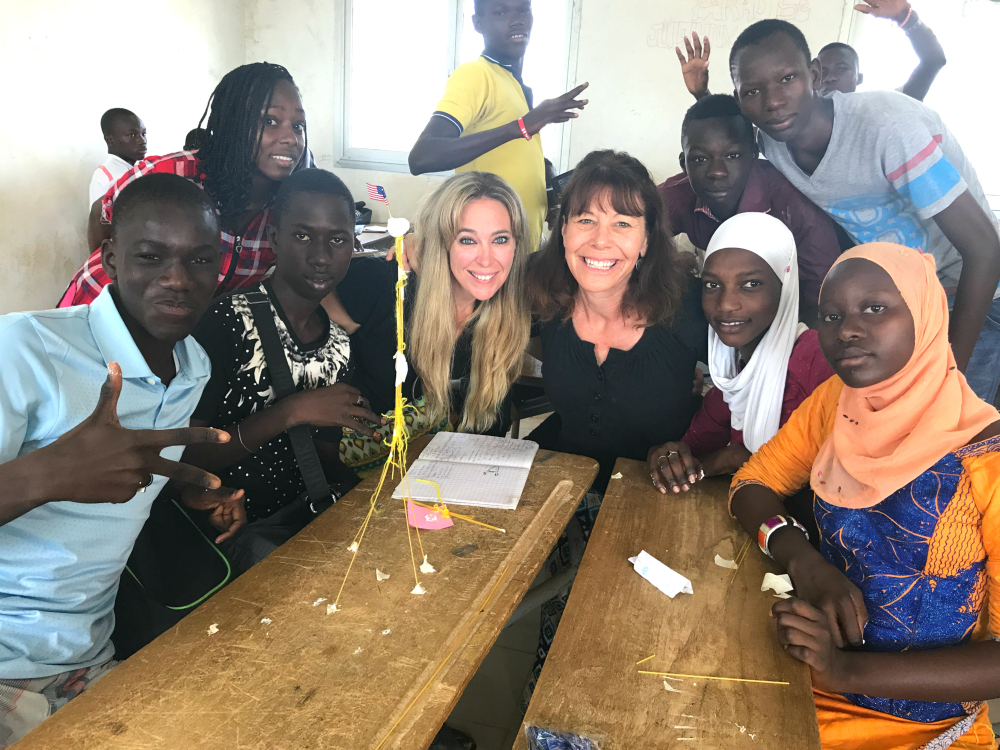
During her two-week trip to Senegal, Gina Whitcomb noticed most teachers are equipped only with a blackboard and a piece of chalk. She learned that students often don’t have luxuries like running water and electricity. And class sizes can exceed 50 or 60 in elementary schools, and upwards of 100 at the high school level.
Still, for Whitcomb, an Anaheim Elementary School District teacher, Senegal reinforced the truism that teachers and parents — regardless of country — simply want what’s best for their children, including a quality education.
And there’s this elevating takeaway: “We all smile in the same language.”
As we reported in April, Whitcomb was one of 10 educators to travel to Africa’s west coast April 18 through May 2 through the Teachers for Global Classrooms program, which encourages educators from the U.S. to immerse themselves in global education.
She did exactly that on a trip she calls “amazing,” “unforgettable” and “life-changing.”

It began with a flight to the capital city of Dakar, where she spent a few days learning lessons on local culture and facts about the Senegalese school system. Then she was paired with Nan Williams, a STEM teacher from Winters Elementary School in Yolo County, and the two were dispatched to the rural lands of Nioro Du Rip.
They spent a week there, visiting elementary, middle and high schools before reconvening in Dakar with other American teachers, who exchanged stories and discussed strategies for bringing a global perspective to their own classrooms.
During their first two days in Nioro du Rip, there was no running water, and temperatures were soaring into the triple digits. Whitcomb and Williams tried to save water in a bucket and considered walking to a nearby well if it didn’t return. (It did.)
“We both took situations that could be stressful to other people and we just laughed,” Williams told us. “At the same time we’re dealing with the water issue, we had Wi-Fi, which was interesting.”
Refrigeration was also extremely rare in Nioro, and no one had a washer or dryer. Yet the two teachers discovered the people of Senegal were rich in one area — their relationships with one another.
“Punctuality isn’t as important because time spent talking and connecting with people along the way is considered far more valuable than being what we would consider ‘on time,’” Whitcomb said. “I learned to love this when I was in Senegal.”
In a country where face-to-face conversations are prioritized, texting can be considered rude and impersonal, she added.
“They call,” Whitcomb said, “so they can talk to the person, visit with them, ask how they are and truly engage with the person in a more intimate way than texting.”
Williams echoed the sentiment.
“We would walk through the market with our host teacher and it would take forever because we would have to talk to every single person,” she said. “He knew everyone.”
These personal connections defined the trip. Whitcomb fondly recounts how that same host teacher, Papa Amadou Seck, invited the two Californians to his home for lunch, where they ate traditional chicken yassa, with rice and onion sauce. It was an act of hospitality, or “teranga,” for which the Senegalese are known.
To reciprocate, and to create opportunities for experiential learning, Whitcomb and Williams paid to take 65 local high-schoolers on a field trip to Sine Ngayene, a prehistoric site featuring large stone circles that may have been used for funerary purposes. They quickly learned that class trips in Senegal are, well, different from those in California.
“No permission slips, no head count, no first-aid kits or sack lunches,” Whitcomb said. “The bus pulled up and 65 students got on.”
Despite the many cultural contrasts, Whitcomb said the journey to Senegal revealed common threads that unite educators and students throughout the world, from Nioro du Rip to Anaheim.
“Although there are many differences between the U.S. and Senegal, there are many similarities,” she said. “Teachers work very hard. Parents want their children to be successful. Kids will be kids. They laugh, play, explore, hang out with their friends — and they like to take selfies, too.”

